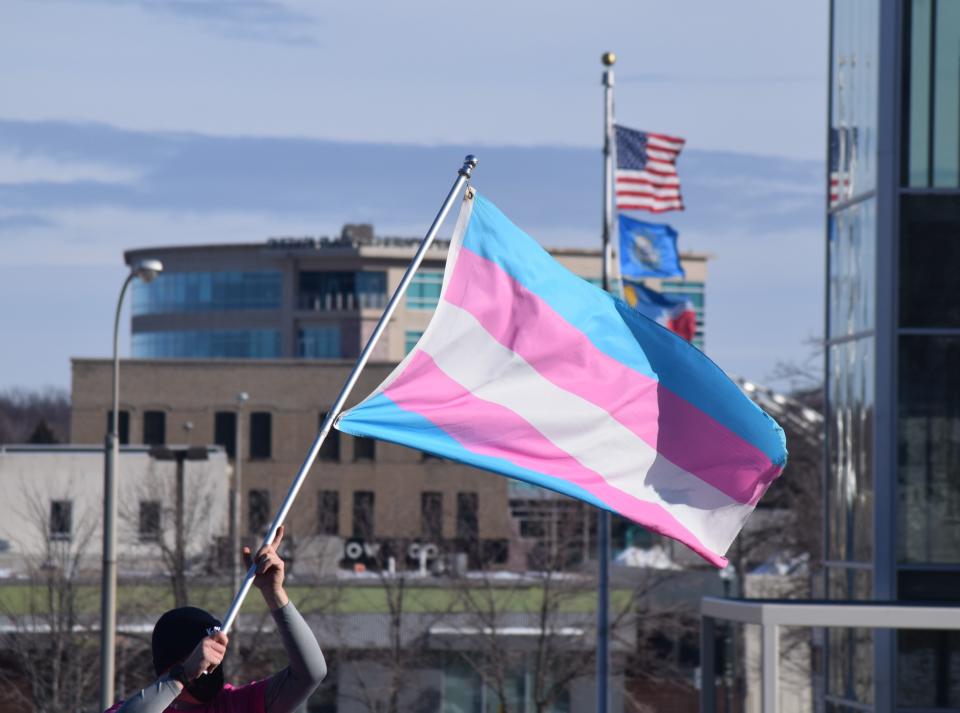Transgender flag explained: Learn what the blue, white and pink mean to the community
- Oops!Something went wrong.Please try again later.
Colorful flags are a standout feature of Pride Month, the June celebration honoring the LGBTQ+ community. But showing pride doesn’t have to exist only in June – you can celebrate your identity, expression and LGBTQ+ loved ones all year long.
If you’ve ever wanted to discover more about the pastel-striped flag the transgender community proudly waves, you’re in the right place. Here's a crash course on the basics of the trans pride flag.
What do the colors of the transgender flag mean?
The transgender pride flag has five stripes with alternating colors – a single white stripe in the middle and alternating light blue and pink stripes above and below it.
The blue and pink colors are the traditional colors for boys and girls, while the white stripe represents transitioning, intersex or gender-neutral identities.
The flag’s symmetry is important as well – according to flag creator Monica Helms, “the pattern is such that no matter which way you fly it, it is always correct, signifying us finding correctness in our lives.”
“I think the colors meant something to people. The fact that the white stripe is for people that are nonbinary, (who) feel that they don’t have a gender, that sort of helps cover them,” Helms told Buzzfeed in 2017. “And those people that want to be a part of the binary they’re included in it.”

'A matter of physical safety': Why deadnaming can create lasting harm
Who created the transgender flag?
Monica Helms, a veteran who served in the Navy from 1970 to 1978, created the flag in 1999 after talking with Michael Page, the creator of the bisexual flag.
As a trans woman, Helms wanted to create something to represent her community. She debuted the flag at a Pride parade in Phoenix, Arizona in 2000, and marched in the color guard of Pride parades with it “dozens of times.” She didn’t start to see its global popularity until 2013, she told Buzzfeed.
Helms’ activism led to the creation of the Transgender American Veterans Association in 2003, and she became the first transgender delegate from Georgia when she was elected as a delegate of the Democratic National Convention.
Helms donated the flag to the Smithsonian’s National Museum of American History in 2014. Her 2019 autobiography, “More Than Just a Flag,” chronicles her time as a submariner in the Navy and her activism for the transgender community.
“We weren’t so visible when I started doing this,” Helms said. “And so I say, don’t be afraid of using your voice.”
What does LGBTQ stand for?: Meaning of each letter, explained
More pride flags explained
Rainbow pride flag | Lesbian flag | Transgender flag | Bisexual flag | Pansexual flag | Asexual flag | Intersex flag | Gender identity flags
Just Curious for more? We've got you covered.
USA TODAY is exploring the questions you and others ask every day. From "When is Pride Month?" to "What does camp mean?" to "What does the 'Q' in LGBTQ mean?" – we're striving to find answers to the most common questions you ask every day. Head to our Just Curious section to see what else we can answer for you.
This article originally appeared on USA TODAY: Transgender flag: Colors and meaning of the pride flag explained

